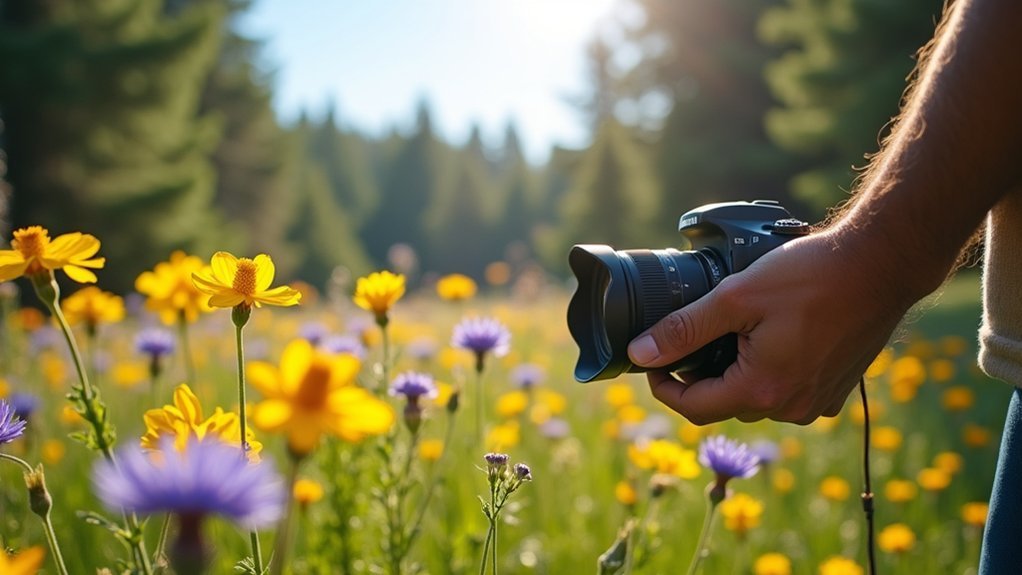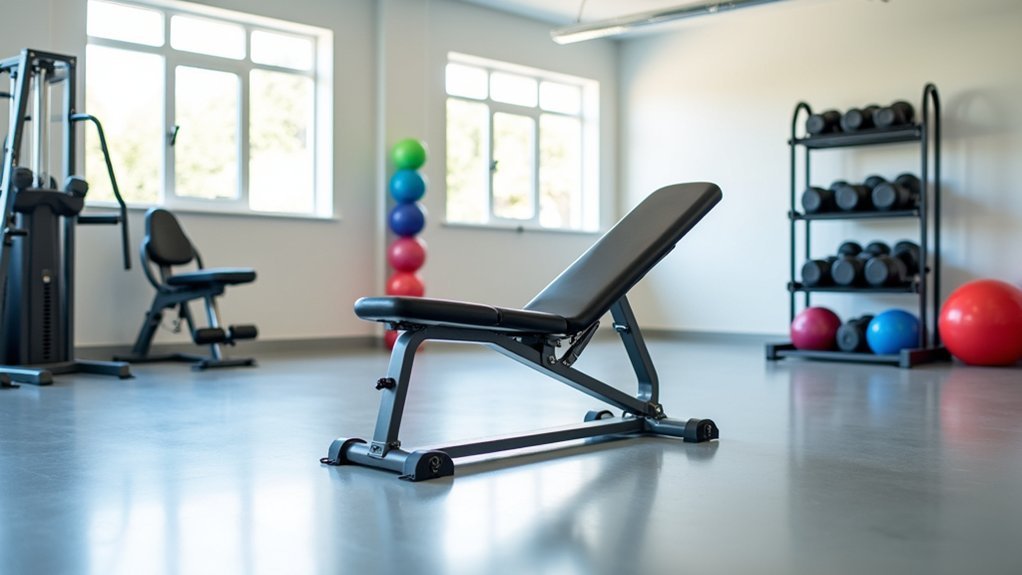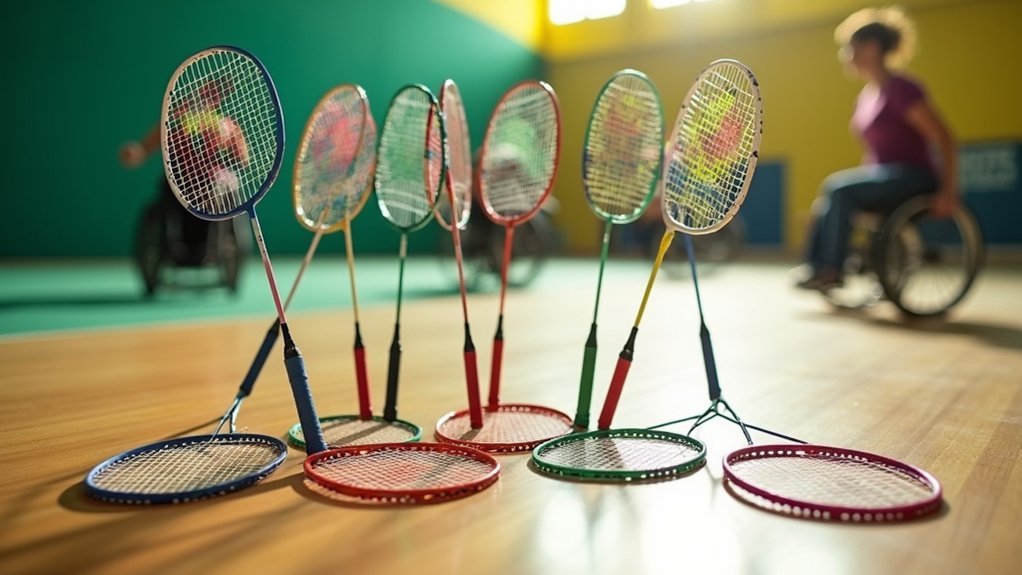Nature photography offers veterans a powerful healing tool by combining outdoor immersion with creative expression. You’ll engage in a practice that reduces stress hormones and PTSD symptoms while capturing beautiful images. Adaptive equipment makes photography accessible regardless of mobility challenges, and group outings foster meaningful connections with fellow veterans who share similar experiences. Through your camera lens, you’ll discover more than scenic views—you’ll find a transformative path to reshape your personal narrative.
The Therapeutic Connection Between Nature Photography and Healing

While many forms of therapy exist for veterans, nature photography stands out as a powerful healing tool that combines creativity with the restorative power of the outdoors.
When you capture images of natural landscapes, you’re actually engaging in a practice that measurably reduces cortisol—your body’s stress hormone.
For veterans facing mental health challenges, this creative outlet offers more than beautiful pictures.
Studies show that outdoor activities like photography can decrease PTSD symptoms by 35%.
The mindfulness required to frame the perfect shot keeps you anchored in the present moment, providing relief from intrusive thoughts.
Essential Adaptive Equipment for Veterans With Limited Mobility
Five key pieces of adaptive equipment can transform the shooting experience for veterans with mobility challenges.
Lightweight tripods with adjustable legs provide stability for steady shots, even when you’re seated, eliminating the need to hold your camera for extended periods.
Camera straps designed for one-handed use prevent accidental drops while keeping your equipment accessible during outdoor activities.
For those with dexterity limitations, ergonomic grips and shutter release cables offer improved control without hand strain.
Consider monopods as tripod alternatives—they’re supportive yet lightweight for easier maneuvering during photography sessions.
Finally, specialized camera bags with thoughtful padding and ergonomic designs reduce physical strain when transporting gear to outdoor locations, making photography more accessible regardless of your mobility constraints.
Finding Accessible Trails and Wildlife Viewing Areas

For veterans with mobility challenges, finding accessible outdoor locations opens up countless photography opportunities. The U.S. Forest Service and websites like AllTrails provide detailed information on accessible trails where you’ll find perfect settings for wildlife viewing and landscape photography.
You don’t have to navigate this journey alone—organizations such as Disabled Sports USA offer adaptive outdoor programs specifically designed to help veterans reconnect with nature.
- Many national parks feature paved or boardwalk trails with wheelchair-friendly viewing platforms where you can set up camera equipment.
- State parks often include accessible fishing piers and bird-watching blinds that offer prime wildlife photography spots.
- Local wildlife reserves frequently provide accessibility maps highlighting routes with proper width, minimal grade changes, and rest areas.
Photography Techniques That Accommodate Physical Limitations
You’ll find adaptive camera mounting solutions that allow secure attachment to wheelchairs, prosthetics, or mobility aids, enabling stable shooting without traditional handholding.
One-handed shutter techniques, including remote triggers, cable releases, and programmable buttons, can revolutionize your shooting experience if you have limited dexterity or upper body mobility.
Voice-controlled photography apps and camera systems offer hands-free operation, letting you command your camera to focus, adjust settings, and capture images through simple verbal cues.
Adaptive Camera Mounting
Photography shouldn’t be limited by physical challenges. With adaptive camera mounting solutions, you’ll find ways to continue your photography journey regardless of mobility limitations.
Tripods with adjustable heights and versatile clamps can stabilize your camera without requiring extensive handling, providing a comfortable shooting experience even during longer photography sessions.
Consider these adaptive solutions:
- Lightweight camera systems with ergonomic grips reduce strain on hands and wrists.
- Customizable mounts that attach directly to wheelchairs or other mobility devices allow unique perspectives while maintaining comfort.
- Remote shutter releases and smartphone apps eliminate the need to press buttons physically.
Specialized camera straps distribute weight evenly across your body, reducing fatigue during extended shoots.
These adaptive tools guarantee your photography remains accessible, allowing you to focus on capturing meaningful images rather than struggling with equipment.
One-Handed Shutter Techniques
Three effective methods exist for capturing quality photographs with just one hand.
First, opt for lightweight mirrorless cameras with a secure camera strap, allowing you to frame nature’s calming landscapes while keeping your equipment safely attached during outdoor adventures.
Second, use your body as a natural stabilizer by resting the camera against your arm or knee, particularly helpful when documenting personal growth moments in natural settings that help reduce PTSD symptoms.
Finally, leverage technology by using automatic focus and exposure settings, freeing you to concentrate on composition rather than manual adjustments.
When possible, incorporate a lightweight monopod or tripod for extended shooting sessions. These adaptations guarantee physical limitations don’t prevent you from experiencing the therapeutic benefits of nature photography, regardless of your mobility challenges.
Voice-Controlled Photography
When traditional camera controls become challenging to manage, voice-controlled photography offers an elegant solution for veterans with mobility limitations. You can set up your smartphone or camera to respond to specific commands, allowing you to focus entirely on composition while technology handles the mechanics. This hands-free approach empowers you to connect with nature without worrying about physical dexterity.
- Configure voice commands for essential functions like “zoom in,” “take photo,” or “adjust focus” to customize your photography experience.
- Pair voice controls with accessibility apps like Assistive Touch for enhanced functionality and personalized shortcuts.
- Experiment with voice-activated timers to capture dynamic nature scenes while maintaining your position.
As you master voice-controlled photography, you’ll discover new creative opportunities that support your mental well-being while documenting your unique perspective of the natural world.
Building Community Through Shared Nature Experiences
Photography excursions with fellow veterans transform solitary healing into collective growth as you capture nature’s beauty alongside those who understand your experiences.
When you share techniques and perspectives during group outings, you’ll forge meaningful connections that extend beyond the camera lens and into lasting friendships.
Veterans teaching veterans creates a powerful mentorship dynamic where skills and coping strategies flow naturally through the shared language of visual storytelling.
Group Expeditions Heal Trauma
Bonds forged through shared challenges often prove more powerful than those formed in comfortable settings, which is why nature expeditions have become transformative healing spaces for veterans.
When you participate in group activities with fellow veterans, you’re engaging in a proven form of outdoor therapy that research shows can reduce PTSD and anxiety symptoms by up to 35%. These shared wilderness experiences create safe environments where you can process trauma while developing supportive networks with others who truly understand.
- Structured outdoor challenges foster open conversations about mental health in non-clinical settings
- Leadership opportunities during expeditions help you rediscover purpose and transferable skills
- Team-based activities combat isolation while building camaraderie through shared accomplishments
Through these experiences, you’ll find healing not just in nature itself, but in the powerful connections formed with others on similar journeys.
Shared Capture Creates Bonds
Through the viewfinder of a camera, you’ll discover that shared photography experiences create profound connections among veterans that extend far beyond casual friendship.
When you venture into nature with fellow veterans, you’re building emotional support networks while capturing beautiful landscapes together.
These outings naturally foster open conversations about mental health challenges in a non-threatening environment. As you adjust settings and frame shots side by side, you’ll find yourselves sharing personal struggles that might otherwise remain unspoken.
The collaborative nature of group photography—scouting locations, waiting for perfect lighting, or reviewing images—builds trust and teamwork essential for lasting relationships.
Many veterans find that these shared experiences lead to ongoing projects and exhibitions, further strengthening community bonds.
The combination of creative expression, natural surroundings, and camaraderie delivers powerful healing benefits you simply can’t find alone.
Veterans Teaching Veterans
When veterans become teachers for their peers, a powerful transformation occurs that extends beyond simply sharing camera techniques.
You’ll witness how this mentor role creates purpose and leadership opportunities that are essential to your healing journey. As you share your knowledge, you’re simultaneously building bridges through common veterans’ experiences.
Mental health services benefit immensely from these organic interactions, as photography skills exchange naturally leads to conversations about personal challenges in a non-clinical setting.
- Community-building activities like photo critiques foster trust among participants who understand unique military perspectives.
- Teaching others reinforces your own progress and validates your artistic vision.
- Peer instruction creates sustainable support networks that continue beyond organized programs.
The reciprocal nature of veterans teaching veterans creates a continuous cycle of growth, empowerment, and collective healing through shared creative pursuits.
Transforming Personal Narratives Through Visual Storytelling
As veterans navigate the complex journey of reintegration and healing, photography emerges as a powerful medium for reshaping personal narratives.
Through your camera lens, you’re not just capturing nature’s beauty—you’re reframing your own story, creating distance from PTSD symptoms while embracing present moments of peace.
When you photograph a serene landscape or elusive wildlife, you’re engaging in visual storytelling that transforms trauma into something meaningful and beautiful.
This creative expression enhances mindfulness, allowing you to focus on the now rather than past experiences.
Frequently Asked Questions
How Do I Fund My Photography Equipment on a Veteran’s Budget?
You can fund photography equipment on your veteran’s budget by exploring VA benefits, seeking veteran discounts, buying used gear, renting equipment, joining photography clubs, or applying for veteran-specific creative arts grants.
What Insurance Considerations Exist for Expensive Camera Gear Outdoors?
You’ll need personal property insurance that covers theft, damage, and loss. Consider specialized equipment coverage, document your gear with photos and receipts, and look for policies with low deductibles for outdoor activities.
How Can Photography Help With Specific PTSD Triggers?
Photography helps with PTSD triggers by giving you control over your environment. You’ll redirect focus to creative expression, practice mindfulness through viewfinder work, and create distance between yourself and triggering stimuli while processing emotions safely.
Are There Veteran-Specific Photography Grants or Programs Available?
Yes, you’ll find several veteran-specific photography grants and programs like the Veterans’ Healing Arts Grant, Warrior Art Project, and the VA’s art therapy initiatives. Check with local VA centers for available opportunities.
How Do I Explain Nature Photography Benefits to My Healthcare Provider?
Tell your healthcare provider that nature photography reduces your stress, improves mindfulness, provides gentle exercise, and boosts your mood. Mention it’s a therapeutic hobby that connects you with the outdoors while developing creative skills.
In Summary
You’ve now got the tools to begin your own healing journey through nature photography. Whether you’re capturing stunning landscapes or quiet moments of wildlife, you’re creating more than photos—you’re reshaping your story. Don’t hesitate to adapt techniques to your needs and connect with fellow veterans in this pursuit. The natural world awaits your unique perspective, one frame at a time.





Leave a Reply